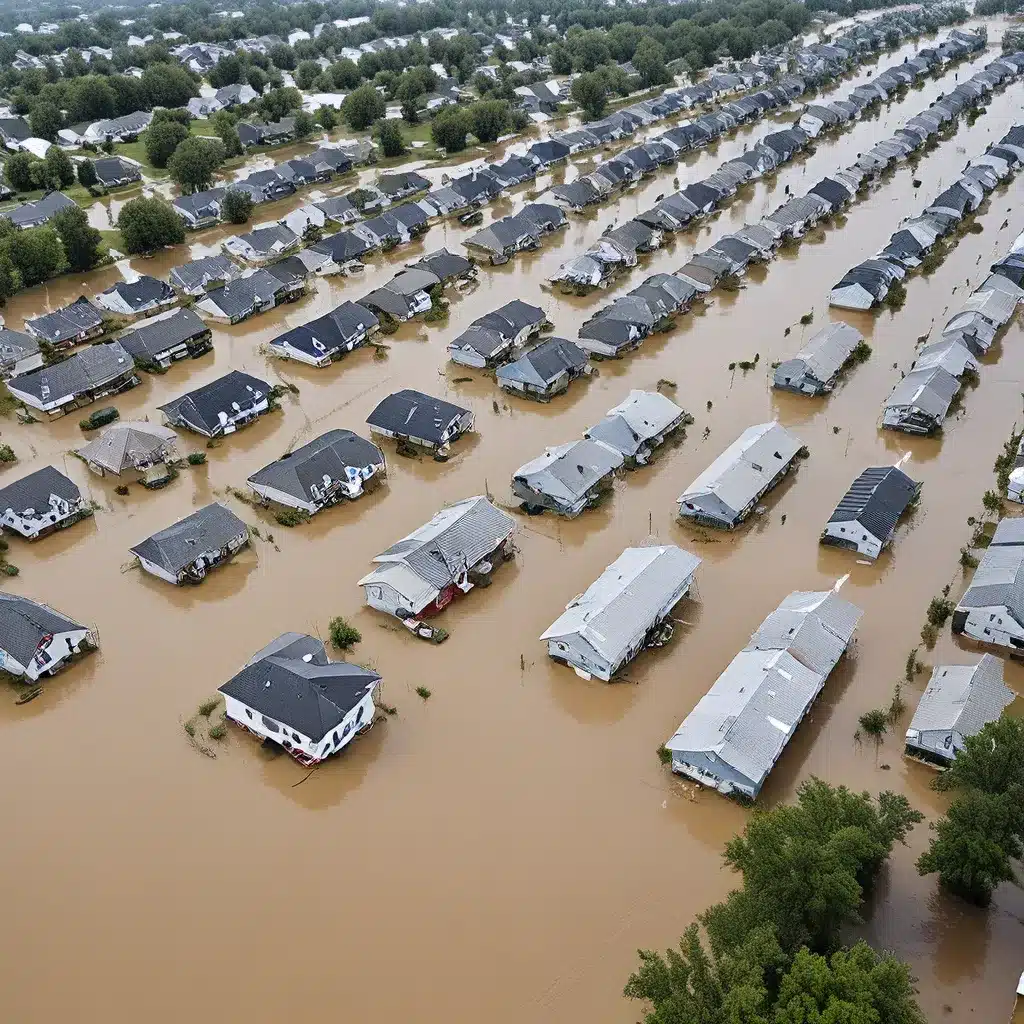
Navigating the Flood: Emergency Water Treatment Strategies
Ah, the joys of Mother Nature – she can bless us with the most serene landscapes one day, and then unleash utter pandemonium the next. When it comes to floods, her wrath can be truly humbling. As someone who’s been through my fair share of water-logged adventures, I can tell you that navigating the treacherous waters of emergency water treatment is no easy feat. But fear not, my friends, for I’m here to share some hard-earned wisdom that just might save your bacon (or at least your drinking water) the next time the heavens decide to open up.
Understanding the Flood Landscape
Let’s start with the basics – the world of floodplain management. Now, I know what you’re thinking, “Floodplain management? Sounds about as exciting as watching paint dry.” But trust me, this stuff is crucial. According to the good folks at FEMA, multiple groups with a stake in protecting their communities from flooding carry out these management functions, including zoning, building code enforcement, education, and other vital tasks.
The National Flood Insurance Program (NFIP) sets the minimum standards for communities participating in the program, but here’s the kicker – adopting higher standards will lead to safer, stronger, and more resilient communities. Think of it like leveling up your character in a video game. Sure, you could coast along with the basic skills, but why not unlock those sweet, sweet power-ups and become a flood-fighting legend?
FEMA’s floodplain management resources are a treasure trove of information, from tools and resources to help navigate NFIP requirements to financial assistance for implementing those higher standards. And let’s not forget about the all-important survey they’re conducting to better understand the training needs and obstacles faced by NFIP communities. Your input could make a real difference, my friends.
Preparing for the Deluge
Okay, so we’ve covered the lay of the land, but what about when the proverbial you-know-what hits the fan? That’s where emergency water treatment strategies come into play, and trust me, you don’t want to be caught without a plan.
Let’s start with the basics – having a reliable water source. Sure, you could try to wrestle a fire hydrant into submission, but I’d recommend looking into emergency shelters and disaster housing options. These can provide a safe haven and access to clean water, which is pretty darn crucial when Mother Nature is on a rampage.
But what if you’re stuck out in the middle of nowhere, surrounded by nothing but floodwaters and your wits? That’s where a little MacGyver-ing comes in handy. I’ve seen people use everything from tarps and buckets to good ol’ fashioned socks (clean ones, of course) to filter and purify water in a pinch. Heck, even a basic sand and gravel filter can work wonders.
Of course, if you really want to be prepared, you could always invest in some high-tech water treatment gear. We’re talking portable filtration systems, UV disinfection devices, and the like. Sure, it might cost you an arm and a leg, but when it comes to keeping your family safe and hydrated, it’s a small price to pay.
Navigating the Flood Response
Now, let’s talk about the big kahuna – the emergency response during a flood. This is where the real adventure begins, my friends. According to the US Army Corps of Engineers, effective floodplain management and emergency response can be the difference between a minor inconvenience and a full-blown disaster.
Picture this: you’re waist-deep in raging floodwaters, and the only thing standing between you and certain doom is your trusty water treatment kit. Do you have the know-how to set up a makeshift decontamination station? Can you quickly assess water quality and determine the best course of action? Because let me tell you, when the adrenaline is pumping, and the waters are rising, every second counts.
That’s why it’s crucial to have a solid emergency plan in place, one that covers everything from evacuation procedures to debris management and damage assessments. And let’s not forget the good old-fashioned power of community. By working together with local authorities, non-profit agencies, and faith-based organizations, you can create a flood response that’s as resilient as an Olympic swimmer.
Weathering the Storm
So, there you have it, folks – my not-so-secret tips for navigating the treacherous waters of emergency water treatment. Remember, when it comes to floods, preparation is key. Familiarize yourself with the resources available, invest in the right gear, and don’t be afraid to get a little creative when the going gets tough.
And who knows, maybe one day you’ll be the one teaching others the art of turning floodwaters into crystal-clear refreshment. Until then, stay safe, stay dry, and keep that Inland Waters Inc. number handy – you never know when you might need a little expert help.


